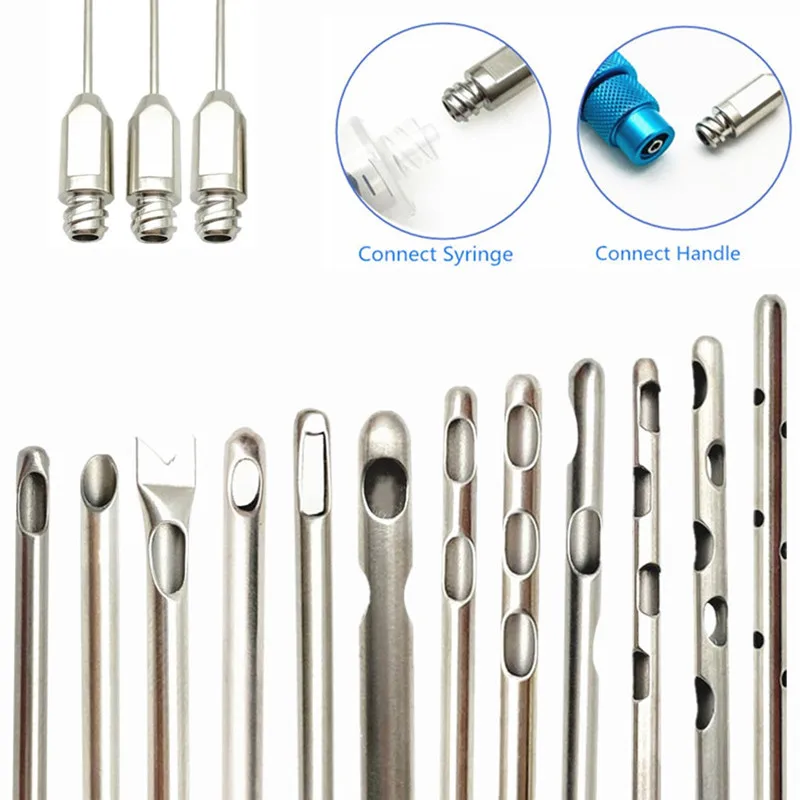Introduction
Surgical instruments are the backbone of modern medical procedures, especially in cosmetic surgery, where precision and safety are paramount. Among the tools used in liposuction surgeries, the infiltration curved liposuction cannula is an essential instrument that plays a key role in ensuring smooth, efficient fat removal. Alongside this, tools like the micro injector cannula and techniques such as nano fat transfer are revolutionizing the way cosmetic surgeons approach body contouring.
In this article, we’ll dive deep into these surgical tools, explaining how they work, the science behind them, and their critical role in liposuction surgeries. Whether you’re a medical professional looking to deepen your knowledge or simply someone curious about the technology behind liposuction, you’ll find this comprehensive guide informative and useful.
The Basics of Liposuction and Surgical Instruments
What Is Liposuction?
Liposuction is a popular cosmetic procedure designed to remove excess fat from specific areas of the body. It’s performed by inserting a hollow tube called a cannula through small incisions in the skin and using a vacuum or suction device to extract fat.
Over the years, liposuction has evolved, with numerous techniques and instruments being developed to improve safety, precision, and outcomes. These tools are critical in ensuring that the procedure is minimally invasive, less painful, and results in a natural-looking appearance.
Types of Liposuction Cannulas
Infiltration Curved Liposuction Cannula
The infiltration curved liposuction cannula is an advanced tool used to administer tumescent fluid into the body before the fat is removed. The curved design allows the surgeon to maneuver it more easily around curves and difficult-to-reach areas of the body. This cannula is typically used in conjunction with tumescent liposuction, a technique where a sterile solution is injected into the treatment area to reduce bleeding, minimize pain, and help with fat removal.
The precision of this cannula ensures that the fluid is evenly distributed, and it helps facilitate a smoother extraction of fat cells. Since the cannula is curved, it can reach more challenging areas like the stomach, thighs, or underarms, giving the surgeon greater control during the procedure.
Micro Injector Cannula
A micro injector cannula is a tool used for the injection of various fluids into the body, often in the context of nano fat transfer procedures. This cannula is designed with an ultra-thin tip, allowing for minimally invasive injections with reduced trauma to the surrounding tissues.
It’s commonly used in fat grafting surgeries, where fat is harvested from one part of the body and then injected into areas like the face or buttocks for cosmetic enhancement. The precision and fine control provided by the micro injector cannula enable more accurate placement of the fat, leading to more natural-looking results.
Nano Fat Transfer: The Future of Liposuction
What Is Nano Fat Transfer?
Nano fat transfer is a cutting-edge technique in cosmetic surgery that involves the transfer of ultra-refined fat to targeted areas of the body. Unlike traditional fat grafting, which uses larger fat cells, nano fat transfer involves breaking down the fat into smaller particles, which allows for better integration with the surrounding tissue. This refined fat can be injected into areas like the face, hands, or breasts for rejuvenation or volume restoration.
A Nano Fat Transfer Kit typically includes specialized tools, including harvesting cannulas and micro injector cannulas, to ensure the fat is collected and injected with maximum precision. The procedure is becoming increasingly popular due to its ability to achieve subtle, natural results with less downtime compared to traditional fat grafting techniques.
The Science Behind Infiltration and Fat Harvesting
How Infiltration Works in Liposuction
Infiltration is the first step in many liposuction procedures, and it’s crucial for minimizing complications like bleeding and bruising. The infiltration curved liposuction cannula is used to inject tumescent fluid, a mixture of saline, lidocaine (a local anesthetic), and epinephrine (a vasoconstrictor). This combination of fluids does several things:
- Reduces bleeding: Epinephrine constricts blood vessels, which limits blood loss during the procedure.
- Numb the area: Lidocaine ensures that the patient feels minimal pain throughout the procedure.
- Softens fat tissue: The saline solution helps break up the fat, making it easier to remove.
By infiltrating the area with this fluid before fat removal, the surgeon can achieve smoother, more efficient results with less discomfort for the patient.

Fat Harvesting Cannulas: Precision and Control
The harvesting cannula is designed to collect fat from the body with precision. The cannula’s shape, size, and tip are carefully designed to minimize trauma to surrounding tissues while maximizing the amount of fat harvested. There are different types of harvesting cannulas, such as the harvester liposuction cannula, which comes in various sizes and shapes to accommodate different surgical goals.
In tumescent liposuction, the harvesting cannula is used after the infiltration process. The cannula is inserted through the small incisions made in the skin, and the surgeon uses it to break up and remove the fat, which is then collected into a sterile container for later use in fat transfer procedures.
Case Study: The Role of Cannulas in Successful Liposuction
A prominent plastic surgeon from New York, Dr. Jane Smith, recently performed a liposuction procedure on a patient seeking fat removal from the thighs. Using the infiltration curved liposuction cannula, she injected tumescent fluid into the treatment area, ensuring minimal discomfort and reduced risk of complications. After the fluid had taken effect, she used a harvesting cannula to carefully remove the fat.
The patient, a 35-year-old woman, was thrilled with the results. Not only did she experience less bruising and swelling than typical liposuction procedures, but she also had the option to undergo nano fat transfer to address volume loss in her face. Dr. Smith’s expertise in using these specialized tools resulted in a smooth, natural-looking outcome that the patient was pleased with.
Pros and Cons of Liposuction Cannulas
Pros
- Minimal invasiveness: Cannulas are designed to be minimally invasive, which means smaller incisions, less scarring, and a quicker recovery.
- Precision: Tools like the infiltration curved liposuction cannula allow for precise fluid distribution and fat removal, leading to more accurate and smoother results.
- Customization: Different types of cannulas are available to address specific needs, such as fat transfer or contouring.
- Reduced downtime: The use of tumescent fluid and advanced cannulas can lead to less bruising, swelling, and a faster recovery time.
Cons
- Not suitable for everyone: While liposuction is effective, it may not be suitable for individuals with certain health conditions.
- Risk of complications: As with any surgery, there are risks associated with liposuction, including infection, scarring, and changes in skin texture.
FAQs About Liposuction Cannulas
Q: How long does it take to recover after liposuction with these cannulas?
A: Recovery time can vary, but most patients can return to normal activities within 1-2 weeks. Full recovery may take 4-6 weeks.
Q: Is fat transfer permanent?
A: The results of fat transfer are long-lasting, but some of the fat may be reabsorbed by the body over time.
Q: Can I undergo liposuction if I’m overweight?
A: Liposuction is not a weight-loss procedure but is intended for body contouring. Ideal candidates are those close to their ideal weight but with localized fat deposits.
Conclusion
The tools used in modern liposuction procedures, such as the infiltration curved liposuction cannula, micro injector cannula, and harvesting cannulas, have revolutionized the field of cosmetic surgery. These instruments help achieve better results with fewer complications, faster recovery, and more natural outcomes.
If you’re considering liposuction or simply want to understand more about these innovative surgical tools, it’s essential to consult with a qualified surgeon who can provide personalized recommendations based on your goals and anatomy.
Have questions or experiences with liposuction that you’d like to share? Drop them in the comments below! Don’t forget to share this article with anyone you think could benefit from learning more about these surgical advancements.

















